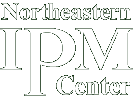Experts Gather Science of Pest Exclusion
Excluding pests from structures is vital to IPM and even though obvious to many, this basic component is often overlooked. If you do not address the defects that allowed a pest entry, it will severely limit successful control.
“Little is known about how pests disperse and establish infestations, especially in aging structures,” said Jody Gangloff-Kaufmann, program coordinator at the New York State Integrated Pest Management Program. “Our group is going to examine the science of excluding pests from buildings.”
In April, the Northeastern IPM Center awarded a grant to their team, the Scientific Coalition for Pest Exclusion (SCOPE) working group.
“Decaying doors, broken or missing door sweeps and large openings around utility lines are often cited as pest access points and are the target of pest exclusion,” Gangloff-Kaufmann said. “The SCOPE group will network with and gather existing data from academia, pest management, and building maintenance and assess what really works.”
Their first priority is to develop an interior and perimeter pest exclusion checklist for property managers. A second and related priority is to examine the ways that weatherization and pest exclusion overlap or conflict. The group plans to release the results of their work on their website, through extension materials, and in social media.
— by SUSANNAH REESE
The Northeastern IPM Center promotes integrated pest management for reducing risks to human health and the environment. If republishing our news, please acknowledge the source (“From Northeast IPM Insights”) along with a link to our website.
